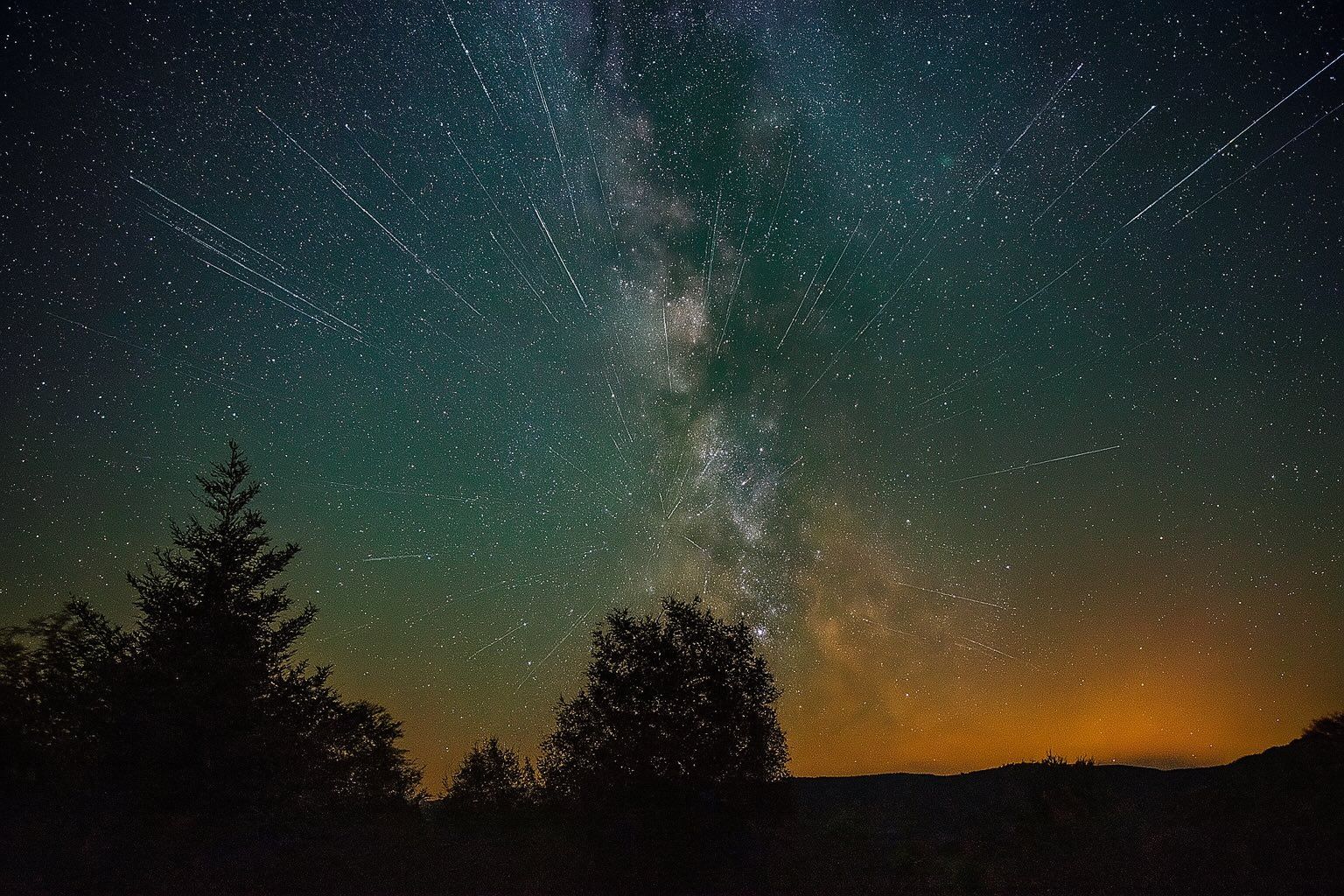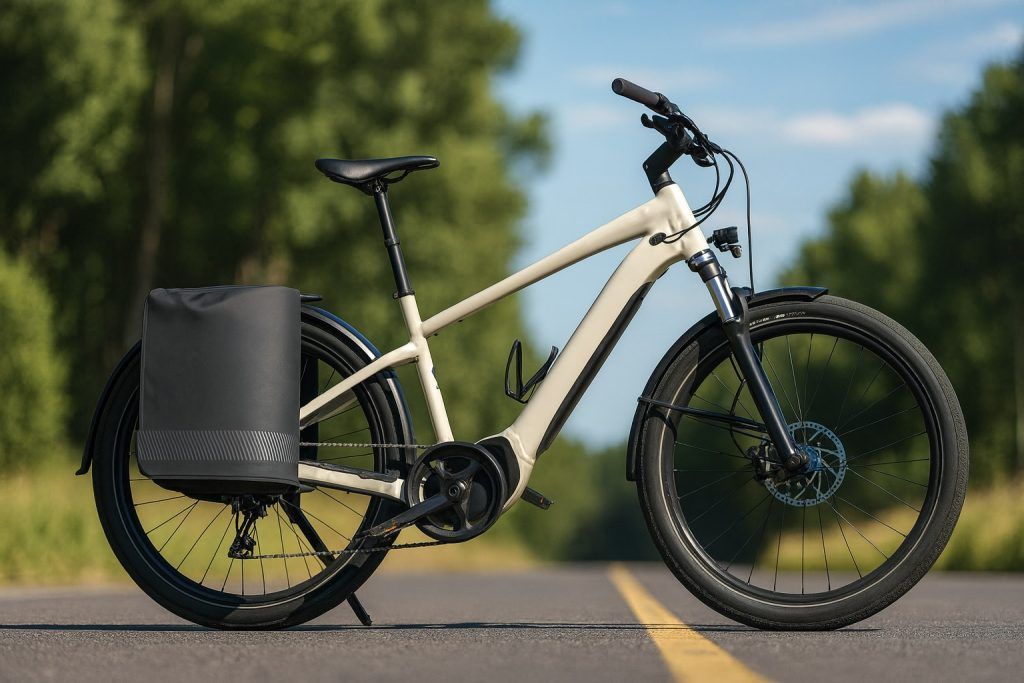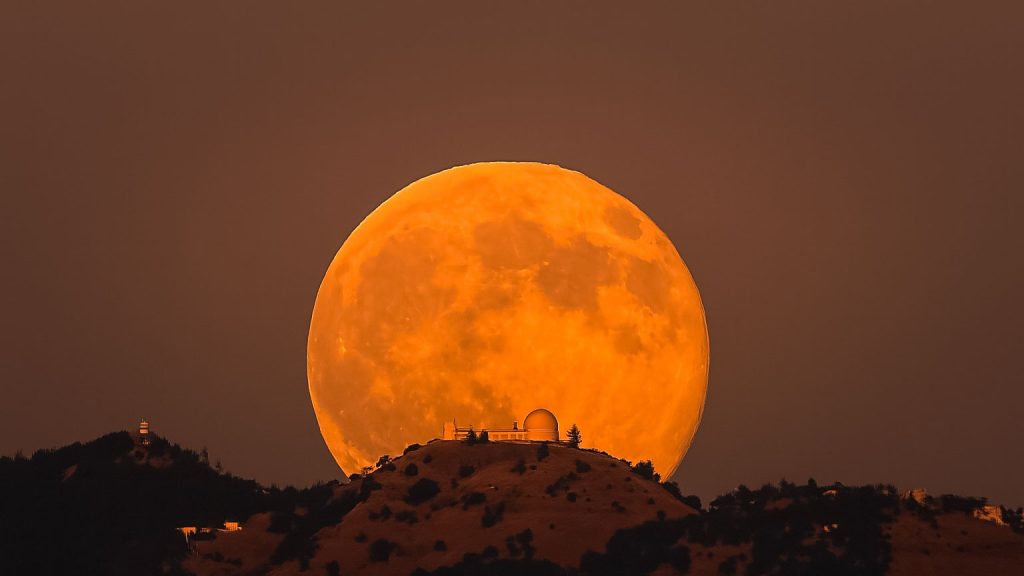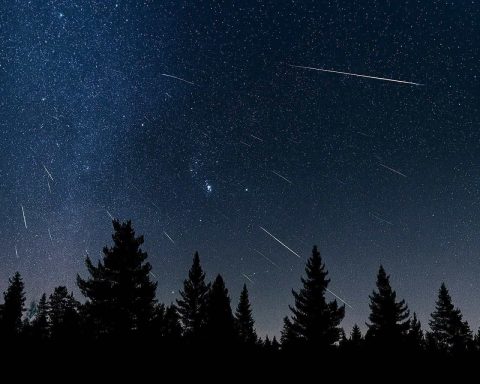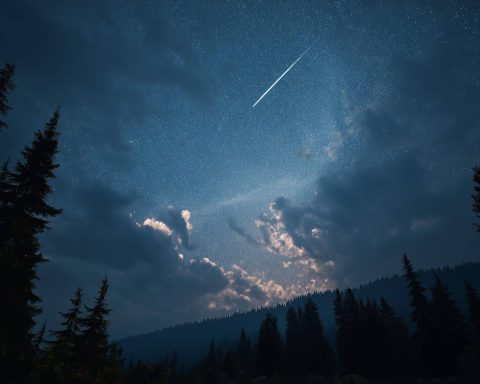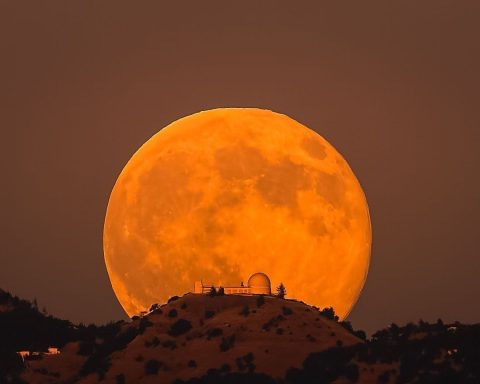- The Perseid meteor shower peaks on August 12–13, 2025, with 50–75 meteors per hour under dark skies and up to ~100 per hour in ideal conditions, though moonlight will reduce counts to about 10–20 per hour.
- The Moon will be full on August 9, 2025 and will be a waning gibbous about 84% illuminated during the peak, washing out fainter meteors.
- The Perseids originate from debris of Comet 109P/Swift-Tuttle.
- A recommended viewing strategy is to watch on the peak night before Moonrise or about a week after peak when the Moon is dimmer, with early-evening Earthgrazers possible.
- The Virtual Telescope Project, led by Gianluca Masi, will livestream the Perseids on August 12, 2025 starting at 21:00 UTC with an all-sky camera.
- Delta Aquariids are active July 18–August 12, 2025, peak around July 29–30, producing about 15–20 meteors per hour at best under dark skies.
- Alpha Capricornids are active July 12–August 12, 2025, with a peak around July 30 and typically ~5 meteors per hour, often bright fireballs.
- Kappa Cygnids are active July 23–August 27, 2025, peaking around August 14 with at most 2–3 meteors per hour and slow-moving speeds (~22 km/s).
- Aurigids are active August 29–September 2, 2025, peaking August 31 at about 5–6 meteors per hour, with fast meteors around 65 km/s and occasional outbursts.
- A pre-dawn Venus–Jupiter conjunction occurs on August 11–12, 2025, appearing about one degree apart in the eastern sky before sunrise.
Get ready for a cosmic light show in August 2025! The night skies will come alive with several meteor showers, headlined by the famous Perseids. Often called “meteor month” by Northern Hemisphere skywatchers [1], August offers warm nights perfect for stargazing. This year, a bright Moon threatens to steal some thunder from the Perseids’ peak, but don’t worry – plenty of shooting stars (including some other minor showers) will still streak across the sky. In this public-friendly guide, we’ll explain what meteor showers are, highlight the Perseid meteor shower of 2025 (with key dates, expected rates, and viewing conditions), cover other meteor showers active in August 2025, share expert quotes and recent news, and give tips for the best viewing experience. Grab a comfy chair and prepare to witness nature’s fireworks!
What Are Meteor Showers?
Meteor showers are celestial events where numerous “shooting stars” flash in the night sky. They occur whenever Earth, on its yearly orbit, plows through clouds of debris left behind by comets or asteroids [2]. As these tiny bits of dust and rock slam into our atmosphere at high speed, they burn up from friction, producing bright streaks of light. The Perseid shower, for example, comes from debris of Comet 109P/Swift-Tuttle [3]. Each meteor zipping by is literally a fragment of that comet disintegrating overhead. The glowing trails can sometimes persist briefly as fiery tails, the final flare of a “shooting star” before it vanishes [4].
Meteor showers are usually named for the constellation or star from which they appear to radiate. For instance, Perseid meteors seem to stream from the direction of Perseus, hence the name. (Don’t worry – you don’t need to find Perseus to enjoy the show; meteors will streak all over the sky!) Each shower happens around the same time each year as Earth revisits the same debris stream. Some showers are faint trickles, while others – like the Perseids or December’s Geminids – are annual favorites known for dozens of meteors per hour under dark skies.
Perseids Meteor Shower 2025: Highlights and Challenges
The Perseid meteor shower is often the year’s most popular meteor display, peaking on warm summer nights when it’s comfortable to be outside [5]. In 2025 the Perseids are active from mid-July to late August, with peak activity expected on the night of August 12–13, 2025 [6]. On a moonless year, skywatchers in dark areas might see 50–75 or even up to ~100 meteors per hour during the Perseid peak [7] [8]. However, this year a bright Moon will pose a challenge. The Moon turns full on August 9, so by the peak nights it will be a waning gibbous (~84% illuminated) – essentially a floodlight in the sky [9] [10]. Its glare will wash out many of the fainter meteors. “The average person under dark skies could see somewhere between 40 and 50 Perseids per hour,” explains Bill Cooke, lead of NASA’s Meteoroid Environment Office. “Instead, you’re probably going to see 10 to 20 per hour or fewer, and that’s because we have a bright Moon in the sky washing out the fainter meteors” [11]. In other words, expect about a quarter of the usual meteors due to moonlight interference [12].
Even with the Moon’s interference, the Perseids won’t be a total bust – the brightest meteors will still shine through. NASA notes that a few fireballs (exceptionally bright meteors) or otherwise vivid Perseids should be visible even in moonlit skies, especially in the pre-dawn hours when the shower’s radiant is highest [13] [14]. Astronomer Guy Ottewell points out that Perseid meteors are “swift” and many are impressively bright – white, yellow, green, red, or orange – leaving spectacular long-lasting trains and ending in flares [15]. These colorful streaks can still catch your eye even with moonlight. In fact, Perseids are famed for their persistent glowing trails (“smoke” trails that can linger a second or two) and occasional exploding meteors. All these factors make the Perseids a beloved shower every year [16].
When and how to watch the Perseids in 2025? Timing is everything. The shower’s activity builds gradually in early August and peaks overnight August 12–13 (with meteors still fairly abundant on the nights just before and after). Because of the Moon, experts suggest a couple of strategies for 2025: One is to try observing during the early evening hours on the peak night before the bright Moon rises. Normally, evening Perseids are few, but those that do appear may be special “earthgrazers” – slow-moving, long-path meteors skimming the atmosphere that can leave dramatic long trails across the horizon [17] [18]. This year, the Moon doesn’t come up until about an hour after dusk, giving a short window of darker sky in the evening [19]. Another strategy is offered by some astronomers: consider watching about a week after the peak, once the Moon is much dimmer. “This year I’m actually recommending that people go out a little bit later — a week or so past the peak when the moon will not be as bright,” says Thaddeus LaCoursiere of the Bell Museum planetarium [20]. By August 18–20 the Moon will be a thin crescent or new, so the sky will be dark – though keep in mind Perseid rates drop off rapidly after August 13 [21], so only a handful per hour might remain. If you’re okay with quality over quantity, a moonless night later in August could still reward you with a few beautiful meteors under a truly dark sky.
The Perseids are best viewed from the Northern Hemisphere (where Perseus climbs high). They are visible in the Southern Hemisphere too, but at a reduced rate since the radiant stays lower above the horizon. Plan to watch between midnight and dawn local time for the highest counts – that’s when Earth is rotating you into the meteor stream. “You’re not going to see Perseids around suppertime… You’re going to have to go out later,” advises NASA’s Bill Cooke [22]. Peak activity typically occurs in the pre-dawn hours (roughly 2–4 a.m. local time), when the Perseus constellation is high and Earth faces head-on into the debris stream [23] [24]. No matter the exact hour, make sure to avoid looking directly at the Moon – you’ll see more meteors by facing away from its glare [25]. Find a dark patch of sky and let your eyes roam; Perseids can appear anywhere, though their trails will all trace back to the northeast sky (Perseus) if you follow them backwards. And don’t forget: each shooting star you catch is a tiny piece of Comet Swift-Tuttle burning up 60 miles overhead – a little bit of cosmic history streaking by [26] [27].
Other Meteor Showers in August 2025
While the Perseids dominate the spotlight, they aren’t the only meteors in town. Several smaller meteor showers are active in August 2025, adding a few extra shooting stars to the mix (and occasionally even their own surprises). Here are the other showers to know about, including their active dates, peak timing, and what to expect in terms of meteor rates:
- Southern Delta Aquariids – Active July 18 – August 12, 2025; Peak around July 29–30. This is a steady midsummer shower that is best seen from the Southern Hemisphere (or southern latitudes) where its radiant is higher [28]. At peak, it produces about 15–20 meteors per hour under ideal dark skies (ZHR ~25) [29]. North of the equator, the rates are lower since the radiant stays low [30]. Delta Aquariid meteors are usually faint and lack persistent trains or fireballs [31] – they tend to be dim “shooters” that don’t leave glowing trails. In late July 2025, the Moon was a waxing crescent that set early, so viewing conditions at the peak were favorable [32]. By early August, this shower is winding down, but you might still catch a few of these meteors (which are slower and travel a different direction than the Perseids).
- Alpha Capricornids – Active July 12 – August 12, 2025; Plateau-like peak around July 30. The Alpha Capricornids are a minor shower, rarely producing more than ~5 meteors per hour at peak [33]. However, what’s notable is that those few meteors can be exceptionally bright. This shower is known for a higher proportion of bright fireballs during its activity period [34]. So while you won’t see many Alpha Capricornids, the ones you do see could be real eye-catchers (slow, bright, and sometimes yellowish). The shower’s radiant is near Capricornus and is visible on either side of the equator about equally well [35]. In 2025 its peak coincided with the Delta Aquariids around July 29–30, when the Moon was a small crescent [36]. If you spot an unusually bright, slow meteor in early August, there’s a good chance it’s an Alpha Capricornid fireball rather than a Perseid.
- Kappa Cygnids – Active July 23 – August 27, 2025; Peak around August 14. The Kappa Cygnids are a very minor shower – at most 2–3 meteors per hour at peak under dark skies [37]. This shower originates from the northern constellation Cygnus (the Swan), and its meteors are noticeably slow-moving (entering the atmosphere at only ~22 km/s, compared to ~59 km/s for Perseids) [38]. The Kappa Cygnids occasionally produce bright, slow fireballs as well, which can be mistaken for early Perseids except for their speed. In mid-August 2025, the Kappa Cygnid peak will be heavily moonlit (the Moon is ~20 days old around Aug 14) [39], so only the brightest few might be seen. This is a shower for dedicated meteor enthusiasts; casual observers might not notice it. But if you’re watching the Perseids around August 12–14, be aware a few stray meteors could be Kappa Cygnids coming from a different part of the sky.
- Aurigids – Active August 29 – September 2, 2025; Peak on August 31. The Aurigid meteor shower closes out August. It’s a short, intense burst of activity that typically only produces ~5–6 meteors per hour at peak [40]. The Aurigids are known for occasionally surpassing expectations with unexpected outbursts, but usually it’s a modest show. The meteors stem from Comet Kiess and are fast (hitting at ~65 km/s) [41]. In 2025, the Aurigid peak happens on the night of August 31–September 1. The Moon will be around 7 days old (first quarter) then [42], so there will be some moonlight early in the night but it sets around midnight. If you’re up late that night, you might catch a few swift meteors radiating from the constellation Auriga (in the northeastern sky). The Aurigids are more of a treat for dedicated observers since the peak is brief and rates are low, but it’s a neat way to cap off the month’s meteor activity.
Aside from these, there are always random “sporadic” meteors each night (around 5 per hour) [43] that aren’t part of any shower. So if you see a shooting star that doesn’t match a shower’s direction or speed, it could just be a random bit of cosmic dust meeting its fiery end!
Expert Insights and Recent News
Astronomers and institutions have been buzzing about the August 2025 meteor showers, especially the Perseids. NASA emphasizes that the Perseids “remain one of the best meteor showers each year,” though in 2025 observers “will have to deal with another bright object in the sky obscuring their view as the shower reaches its max” – that object being the Moon [44]. In a NASA “Watch the Skies” blog update, experts warned that the waning gibbous Moon on Aug 12–13 could reduce visible meteors to less than half of the usual dark-sky rates [45] [46]. Bill Cooke of NASA’s Meteoroid Office was quoted (as noted earlier) advising that only ~10–20 Perseids per hour may be visible at peak this year due to moonlight [47].
The American Meteor Society (AMS) also highlighted the Moon issue in their 2025 Perseids guidance. “The strength of each Perseid display varies year to year, mainly due to lunar conditions,” AMS advisor Robert Lunsford writes. “In 2025, a waning gibbous moon will rise during the late evening hours, reducing the number of meteors you would normally see during moonless displays. If one could count 50 Perseids per hour under dark skies, then we can expect between 10–20 under the conditions offered in 2025.” [48]. The AMS notes that most Perseids are fairly faint, so moonlight dramatically cuts down the visible count [49]. However, they encourage observers not to skip the shower entirely – just to adjust expectations. In fact, the Perseids in 2025 still have something special to offer: during the early part of the night, before the Moon rises, there’s a chance to spot those rare “Earthgrazer” meteors skimming the horizon (a good year for them since moonlight won’t interfere until later at night) [50]. These long-lasting meteors can be truly memorable if you catch one.
Some experts have even looked to past years for insight. Space journalist Joe Rao noted that in 1968 – a year when the Perseid peak coincided with a similarly bright Moon – observers reported drastically reduced counts. At a public meteor watch in New York City that year, an astronomer predicted one meteor “every minute or two” under ideal conditions, but “with the bright moon maybe it will be one every minute or three.” In reality, observers saw more like one every eight minutes in the moonlight [51]. This historical anecdote underscores that moonlight can significantly hamper meteor visibility. The good news: moonlight mostly hides the faint meteors, but many Perseids are bright enough to still be seen. As Rao explains, “Moonlight, however, only hides faint meteors. But a fair number of Perseids are typically fast, bright, and occasionally leave persistent trains… such bright, streaky Perseids can burn right through a moonlit sky.” [52] In other words, the Perseids will still deliver some eye-catching fireballs and streaks, even if not as many as an ideal year.
On the outreach and events side, organizations are gearing up to help the public enjoy the show. The Virtual Telescope Project, run by astrophysicist Gianluca Masi in Italy, will host a free live webcast of the Perseids at the peak. “At Virtual Telescope we will broadcast the meteor shower live, online, for free… on 12 Aug. 2025, starting at 21:00 UTC,” Masi announced [53]. They’ll use an all-sky camera to showcase the meteors in real time, so people worldwide can tune in and not miss the spectacle (especially helpful if clouds or city lights obscure your own view). Many local astronomy clubs, science centers, and parks are also organizing Perseid viewing parties – for example, some planetariums host overnight watch events, and national parks often invite visitors to meteor shower campouts. It’s worth checking community calendars for any “star parties” in your area around August 12–13.
In current news, one interesting “consolation prize” for 2025’s Perseids was pointed out by NASA: coinciding with the meteor shower, the two brightest planets Venus and Jupiter have a close conjunction in the pre-dawn sky [54]. On the mornings of August 11 and 12, Venus and Jupiter appear just a degree apart, shining together like a brilliant double beacon before sunrise [55]. So, if you’re up early hunting meteors, you’ll also get to see this rare planetary meetup low in the east – a nice added treat courtesy of the cosmos. (In fact, Venus and Jupiter plus a crescent Moon make for a photogenic scene around August 19–20 as well [56].) Additionally, NASA’s Meteor Watch social media will likely share live meteor counts and imagery overnight during the peak, and the International Meteor Organization (IMO) will collect observer reports globally to track Perseid activity in real time. Despite the moonlight, the astronomical community is rallying to make the most of meteor season.
Tips for the Best Viewing Experience
Watching a meteor shower requires no special equipment – just your eyes, patience, and a bit of planning. Here are some tips to maximize your enjoyment of the Perseids or any meteor shower:
- Find a Dark, Open Sky: Light pollution is your enemy. Try to get to a safe rural location or dark-sky spot away from city lights. The more stars you can see with the naked eye, the more meteors you’ll catch. A wide-open view (fields, hilltops, or beaches) is ideal so you can scan as much sky as possible [57]. If possible, position yourself so that any bright Moon is blocked behind trees, a building, or a hill – this will help preserve your night vision and let you see fainter meteors [58].
- Timing is Key: For most showers, late night into the early morning hours yields the highest rates. Aim for the window between midnight and dawn, when Earth faces the incoming meteoroid stream head-on [59]. For the Perseids in particular, peak activity is often just before dawn. That said, don’t ignore early evenings – around a shower’s peak date, you might see a few earthgrazing meteors in the evening (these can be long and spectacular). And if moonlight is an issue at peak time (like 2025’s bright Moon), consider observing on a surrounding night when the Moon is lower or set, even if the meteor rates are a bit reduced [60] [61]. Check the shower’s predicted peak time and your local moonrise/moonset to plan accordingly.
- Get Comfortable & Stay Patient: Meteor watching is a waiting game. Bring a lounge chair or blanket so you can lie back and look up without straining your neck. Dress appropriately for the late-night temperature (summer nights can still get chilly in some places) and guard against mosquitoes. Allow your eyes 15–20 minutes to adapt to the dark – avoid looking at any lights or phone screens during this time (and during your watch) as it will ruin your night vision [62]. Once your eyes are dark-adapted, you’ll start to see more stars and faint meteors. It’s okay to use a dim red flashlight if you need light, as red light has less impact on night vision.
- No Telescopes or Binoculars Needed: You want to use your wide-field eyes to catch meteors moving across the sky. Observing aids like telescopes actually hurt in this case, because they restrict your field of view. Just look up and scan around. Meteors can appear in any part of the sky, so it’s best to cast your gaze loosely over a large area (about 45° up from the horizon is a good angle). If you face generally toward the direction opposite the Moon (when the Moon is up) or toward the known radiant’s general area (for Perseids, facing northeast is good, but not required), you’ll improve your odds [63]. Remember, if a meteor catches your eye, you saw it – no need to focus in any one spot.
- Be Observant (and Maybe Contribute!): As you watch, note the different qualities of meteors. Some will be quick streaks, others slower fireballs; colors can vary (you might catch tinges of green, orange, or blue). Every meteor shower has its personality – for example, Perseids are fast and often leave trains, whereas something like the Taurids in autumn are very slow but produce many fireballs. If you want to take it a step further, you can report your meteor counts to organizations like the AMS or IMO, contributing to citizen science [64] [65]. They often welcome observers’ logs of how many meteors were seen in an hour and under what conditions. But this is optional – the main goal is to have fun watching nature’s fireworks!
- Mind the Weather: No meteors will be visible if you’re clouded out. Keep an eye on the weather forecast and try to pick a night or location with clear skies. If the peak night is cloudy, try the next night or even the one before peak – there will still be meteors, just slightly fewer. Sometimes driving an hour or two to escape cloudy weather or coastal fog can make the difference in seeing the shower. Also, darker sky conditions (like higher elevation sites or areas with low humidity and no haze) will improve the number of meteors you see.
- Bonus Tip – Enjoy Other Sights: While waiting for meteors, enjoy the summer night sky. In August, the Milky Way is often spectacular overhead in dark locations. This August 2025, as mentioned, Venus and Jupiter will form a brilliant pair in the east before dawn [66], and Saturn will be visible as a steady golden “star” in the south. Identifying a few constellations or planets can enrich the experience (many astronomy apps can help, just keep your phone dim). But most of all, soak in the experience of the quiet night – the excitement when a meteor streaks by is worth the wait.
Additional Resources and Live Updates
For those eager to dive deeper or get real-time information, here are some great resources:
- NASA Skywatching & Meteor Shower Info: NASA provides monthly skywatching tips and sometimes livestreams for major events. Check out NASA’s What’s Up skywatching guide [67] and the NASA Meteor Showers page. NASA’s “Meteor Watch” team (on social media) often posts updates and meteor images during showers, and their blogs (like the Marshall Space Flight Center “Watch the Skies” blog) give expert insights [68] [69].
- American Meteor Society (AMS): The AMS website offers a meteor shower calendar and weekly updates on meteor activity. Their 2025 Meteor Shower List details all showers, their active dates and expected rates [70] [71]. They also have a meteor observing guide with tips, and they encourage the public to report meteor sightings (especially fireballs) [72] [73]. It’s a treasure trove of meteor info for enthusiasts.
- International Meteor Organization (IMO): The IMO coordinates meteor observers worldwide. Around the Perseid peak, they publish near-real-time reports and graphs of meteor rates as seen by observers globally. It’s a neat way to see if the shower is over- or under-performing. Their site (imo.net) also has a live radiant map and other technical data for those interested.
- Livestreams and Events: If you can’t watch outside or prefer expert commentary, tune into the Virtual Telescope Project’s live webcast of the Perseids on August 12, 2025 [74]. Gianluca Masi and his team will show live sky views and discuss what’s happening. Additionally, some observatories and science museums may host live streams or Facebook Live events during the Perseid peak – for example, Lowell Observatory and others have done so in the past. Keep an eye on YouTube or social media for “Perseid meteor shower live 2025” events. And if you’re near a local planetarium or astronomy club, see if they’re holding a public viewing night; joining a group can enhance the experience (and experts on-site can answer questions or help point out things).
- Weather and Light Pollution Tools: To plan your outing, you can use apps/websites like Clear Sky Chart or weather satellites for cloud forecasts, and DarkSiteFinder or Light Pollution Maps to find dark observing locations. Knowing when the Moon rises or sets at your location on a given date is also useful – many astronomy apps will provide that, or websites like Timeanddate.
Finally, don’t forget to simply enjoy the meteor shower. Even a “weak” Perseid year can produce moments of awe – like a surprise bolide streaking across the sky. Make an event of it: invite friends or family, bring snacks or a hot drink, and lie back under the summer stars. The universe is putting on a show, and you have a front-row seat. Clear skies and happy meteor watching!
Sources:
- NASA – Watch the Skies blog: “Bright Moonlight Could Interfere with View of Perseids’ Peak” (Aug 8, 2025) [75] [76]
- NASA – What’s Up: August 2025 (skywatching highlights) [77] [78]
- American Meteor Society (AMS) – “Viewing the Perseids in 2025” by R. Lunsford [79] [80]; AMS Meteor Shower Calendar [81] [82]
- Associated Press – C. Larson, “Summer’s best meteor shower peaks soon. But the moon will interfere with viewing the Perseids” (Aug 2025) [83] [84]
- EarthSky – Meteor Shower Guide 2025: Perseids (Aug 1, 2025) [85] [86]
- Space.com – J. Rao, “Will the bright moon ruin the Perseid meteor shower, or is it still worth watching?” (Aug 8, 2025) [87] [88]
- Space.com – A. Wood, “The Perseid meteor shower 2025 peaks Aug. 12-13: What to expect” (Aug 5, 2025) [89]
- Virtual Telescope Project – Perseids 2025 live online event announcement [90]
References
1. www.space.com, 2. apnews.com, 3. apnews.com, 4. apnews.com, 5. www.amsmeteors.org, 6. www.amsmeteors.org, 7. www.amsmeteors.org, 8. www.space.com, 9. science.nasa.gov, 10. www.amsmeteors.org, 11. www.nasa.gov, 12. www.amsmeteors.org, 13. science.nasa.gov, 14. www.nasa.gov, 15. www.space.com, 16. earthsky.org, 17. www.amsmeteors.org, 18. www.amsmeteors.org, 19. www.amsmeteors.org, 20. apnews.com, 21. earthsky.org, 22. www.nasa.gov, 23. www.nasa.gov, 24. www.amsmeteors.org, 25. www.nasa.gov, 26. www.nasa.gov, 27. www.amsmeteors.org, 28. www.amsmeteors.org, 29. www.amsmeteors.org, 30. www.amsmeteors.org, 31. www.amsmeteors.org, 32. www.amsmeteors.org, 33. www.amsmeteors.org, 34. www.amsmeteors.org, 35. www.amsmeteors.org, 36. www.amsmeteors.org, 37. www.amsmeteors.org, 38. www.amsmeteors.org, 39. www.amsmeteors.org, 40. www.amsmeteors.org, 41. www.amsmeteors.org, 42. www.amsmeteors.org, 43. www.amsmeteors.org, 44. www.nasa.gov, 45. www.nasa.gov, 46. www.nasa.gov, 47. www.nasa.gov, 48. www.amsmeteors.org, 49. www.amsmeteors.org, 50. www.amsmeteors.org, 51. www.space.com, 52. www.space.com, 53. www.virtualtelescope.eu, 54. science.nasa.gov, 55. science.nasa.gov, 56. science.nasa.gov, 57. www.nasa.gov, 58. www.nasa.gov, 59. www.nasa.gov, 60. apnews.com, 61. apnews.com, 62. apnews.com, 63. www.nasa.gov, 64. www.amsmeteors.org, 65. www.amsmeteors.org, 66. science.nasa.gov, 67. science.nasa.gov, 68. www.nasa.gov, 69. www.nasa.gov, 70. www.amsmeteors.org, 71. www.amsmeteors.org, 72. www.amsmeteors.org, 73. www.amsmeteors.org, 74. www.virtualtelescope.eu, 75. www.nasa.gov, 76. www.nasa.gov, 77. science.nasa.gov, 78. science.nasa.gov, 79. www.amsmeteors.org, 80. www.amsmeteors.org, 81. www.amsmeteors.org, 82. www.amsmeteors.org, 83. apnews.com, 84. apnews.com, 85. earthsky.org, 86. earthsky.org, 87. www.space.com, 88. www.space.com, 89. www.space.com, 90. www.virtualtelescope.eu
